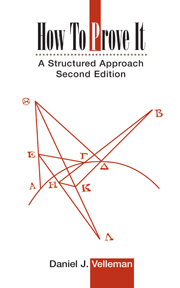2 - Quantificational Logic
Summary
Quantifiers
We have seen that a statement P(x) containing a free variable x may be true for some values of x and false for others. Sometimes we want to say something about how many values of x make P(x) come out true. In particular, we often want to say either that P(x) is true for every value of x or that it is true for at least one value of x. We therefore introduce two more symbols, called quantifiers, to help us express these ideas.
To say that P(x) is true for every value of x in the universe of discourse U, we will write ∀x P(x). This is read “For all x, P(x).” Think of the upside down A as standing for the word all. The symbol ∀ is called the universal quantifier, because the statement ∀x P(x) says that P(x) is universally true. As we discussed in Section 1.3, to say that P(x) is true for every value of x in the universe means that the truth set of P(x) will be the whole universe U. Thus, you could also think of the statement ∀x P(x) as saying that the truth set of P(x) is equal to U.
We write ∃x P(x) to say that there is at least one value of x in the universe for which P(x) is true.
Information
- Type
- Chapter
- Information
- How to Prove ItA Structured Approach, pp. 55 - 83Publisher: Cambridge University PressPrint publication year: 2006
